Welcome to White Oak Farm!
YOU WANT TO RAISE CHICKENS!
That’s a very exciting decision! However, deciding to bring any baby animal home takes lots of careful planning, and chickens are no different. It’s a lot like having a baby because they will depend on you for almost everything at first.
They will require constant care and monitoring, so make sure your schedule is pretty clear for the first 4 weeks! Don’t plan any vacations or even day trips unless you have a chick pro standing by. Make sure you are able to check on them at least 3-5 times per day. They can get into serious trouble many ways and pretty quickly too.
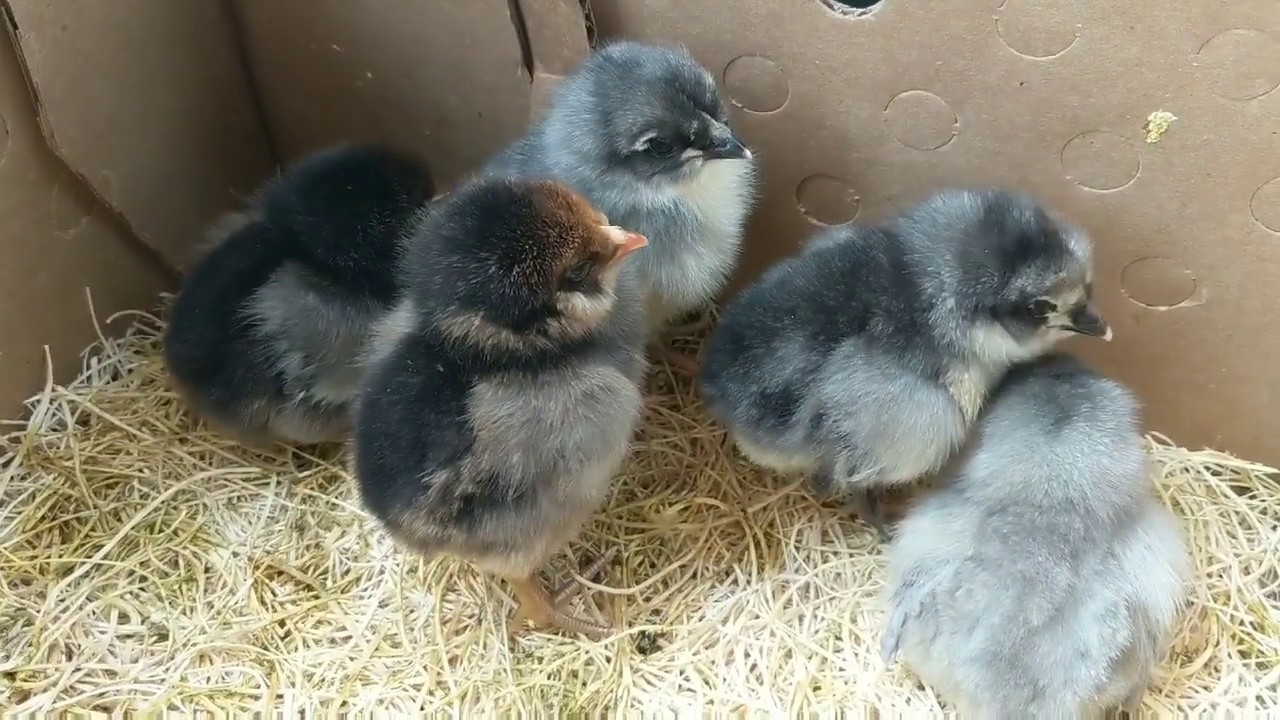
Once you’ve decided you are ready to raise chickens you’ll have to decide what kind. Do you want to raise them for meat or eggs, or both? Maybe you really want a unique breed that’s known mostly for its beauty or unusual coloring. There are a few breeds that can be good for both meat and eggs, but lots of breeds are really best suited for one purpose or the other.
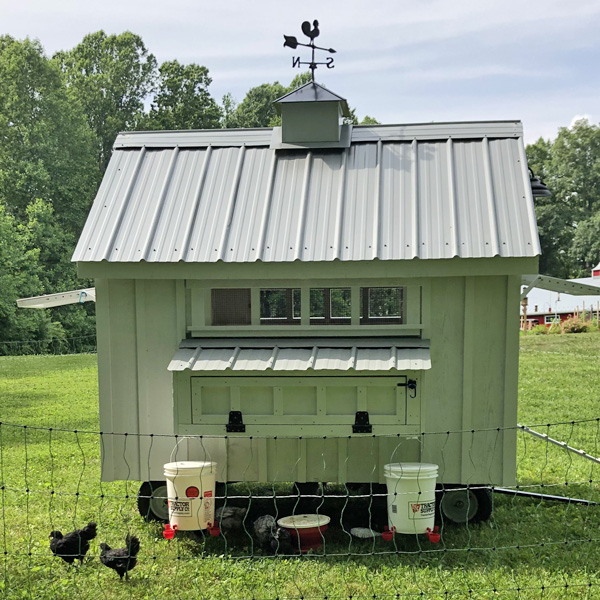
MANY CHICKEN BREEDS TO CHOOSE FROM
My recommendation
I can recommend a few breeds that are great for just about anyone if your main purpose is fresh eggs and possibly a chicken stew once they age and stop laying, but your personality, available space, climate and purpose really will determine which ones will be the best fit for YOU!
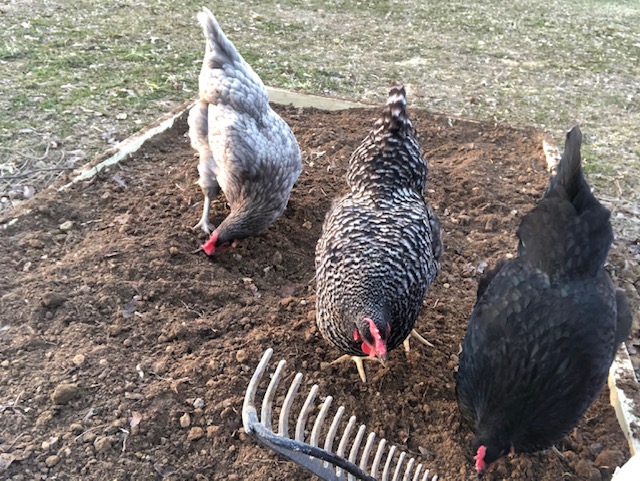
There are three standout breeds that tend to be easy keepers. The Orpington and Australorp breeds now come in several different colors and are beautiful, hardy chickens. And the third is the Plymouth Barred Rock, which are also very hardy and beautiful. These 3 chicken breeds are known for being docile, quiet, friendly to people and each other. They can be equally happy in confinement or free-ranging and are considered dual-purpose breeds as well. However, you should know nothing with chickens is foolproof and there are always individuals in any breed that can be very different from the usual.
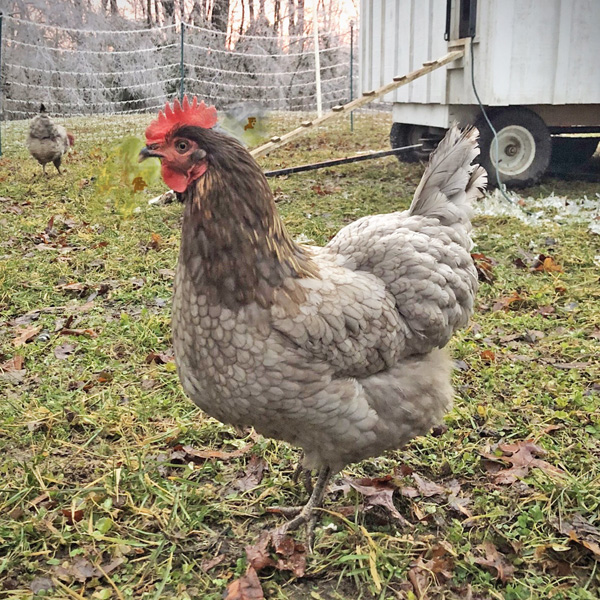
MEAT CHICKENS
If you specifically want meat birds, there are two main breeds right now that are proven for quality meat, efficient and quick weight gain, and ease of care. They are the Cornish Cross and the Freedom Ranger.
The Cornish Cross is an all-white chicken that is currently used in large farming operations because they grow the plumpest the fastest of all breeds, about 6-8 weeks. This cuts feed costs and speeds up turn around time in the chicken houses for a new batch. They are sluggish, eating and pooping machines that do not have much feathering, and are prone to bald spots. They can not be grown much longer or larger because they become very prone to broken legs and even heart attacks from their own weight.
The Freedom Ranger is a reddish or golden brown feathered bird that is lesser known, but seems to be preferred by many homesteaders for a couple different reasons. Even though it takes them 2-3 weeks longer than the Cornish Cross to reach the same size, they tend to be more well-feathered and a healthier, stronger chicken overall. They can even mature into decent egg layers if you end up changing your mind!
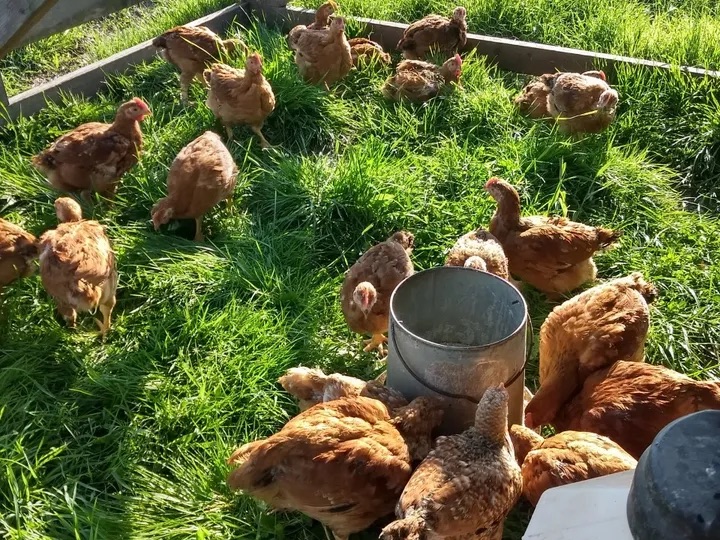
EGG LAYER CHICKENS
The most prolific egg layer chicken breed would undoubtedly be the White Leghorn. These are the ones that lay most of the white eggs you find in the grocery store. They will lay more than 325 pure white eggs per year. They are fairly large chickens and lay extra large and jumbo sized eggs.
Another prolific breed that lays the typical brown grocery store eggs is the Rhode Island Red and variations of it. They are pretty chickens that originated in the north so they are cold hardy and reliably lay over 325 eggs per year.
Breeds that have been specially bred for extra or more colorful plumage don’t normally lay as many eggs as those two. Some will only lay 150/year, but there are many beautiful breeds to choose from that will yield you 280-340 eggs /year! Each breed will also typically lay a different size and color egg. 🥚🥚🥚🥚🥚😁
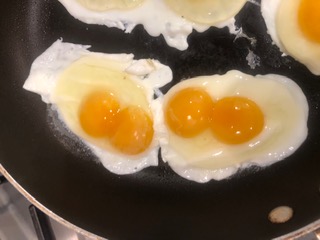
isn’t this exactly why you want to raise your own chickens!?
Pasture-raised chickens with access to sunshine, good quality feed, green grass and a healthy supply of bugs will have darker, orangey yolks! They are better for you than store-bought since they have less cholesterol, saturated fat and calories! They are also full of more Omega 3 nutrients and more vitamins. And isn’t this exactly why you want to raise your own chickens!?
NUTRITION OF CONVENTIONAL VS. PASTURE-RAISED EGGS
In 2007, Mother Earth News magazine decided to test the nutritional value of pastured eggs from 14 different farms.
They were measured in a lab, then compared to the USDA standard conventional egg.

As you can see, eggs from pastured hens were more nutritious than the conventional eggs you might find at the supermarket. Source: https://www.healthline.com/nutrition/pastured-vs-omega-3-vs-conventional-eggs#TOC_TITLE_HDR_4
What the hen eats daily and if she has access to sunshine will all greatly affect the nutrition of her eggs! Store-bought eggs have a definitely yellow yolk, but pasture-raised chicken eggs have a darker, more orange color because they are enriched with lots of nutrients and Omega 3 goodness! They have a very good, slightly richer taste that some people can detect, but other people can’t tell the difference. My neighbors and family love all the extra eggs I give them!
BTW…You actually CAN put all your eggs in one basket!

COLORED EASTER EGGS ALL YEAR ROUND?!
These days you don’t even have to chose between just white or brown eggs because there are chickens that lay from cream to dark brown, bright or pale blue, light to olive green, pink and even gray eggs! It’s all the rage right now to raise a mixture of breeds that lay a kaleidoscope of colored eggs! And why wouldn’t you want a colorful Easter basket full every day? It can be exciting and so fun to look in the nest boxes because it’s different every day.
Egg shells from the same breed can be slightly different shades. Most of this is determined by genetics. Most egg shells are white inside, regardless of the exterior color, except blue and green eggs, which are usually the same color inside and out! Adult hens will lay the same color egg every day for their whole life, but the shade she lays as a juvenile hen will be slightly darker than her adult color.
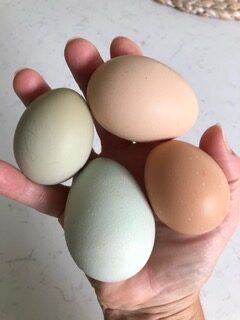
OUR SMH CHICKENS
Our 3 Black Australorps lay cream colored eggs, the 3 Plymouth Barred Rocks lay shades of light brown, and our 2 Sapphire Olive Eggers lay 2 different shades of green. Three of our Sapphire Gems lay a darker brown, one lays a light bluish-green or aqua colored egg, and one lays a light brown speckled egg! They are almost 1 year old now and laying 5-6 eggs per week. A couple of our smaller hens lay medium size eggs, but many of them lay large to extra large size eggs and sometimes a jumbo size or double yolk, which amazes me!
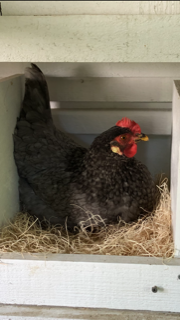
I have one Sapphire Gem that looks a little different than the others and surprisingly lays a beautiful aqua blue egg! Her name is Patty. (Must be because of the large hatchery breeding, lol) My two Sapphire Olive Eggers lay 2 different shades of green eggs, one is olive and the other is a little lighter green! They’re so pretty! 💕💚🤎💙
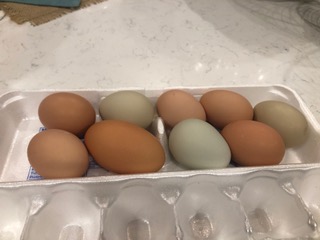
CHOOSING AND BUYING YOUR CHICKS
There really are so many different breeds to choose from that I highly encourage you to do a little research on your own to figure out which ones would best suit you. There are lots of websites online that have great info on all the breeds. Chickens are not all the same so it’s like choosing a puppy. You may want to choose breeds for their certain characteristics so that you have chickens that meet your unique situations, needs and personality.
There are several ways to get baby chicks. Many hatcheries around the country hatch baby chicks and/or sell hatching eggs. You can simply place your order online in many cases or call them! Decide how many of each kind you want and what date you want them. Then they will normally mail them to you via USPS. Local farms, breeders, feed stores and even some hardware stores get in on the action in rural areas, so you really can find them lots of places.
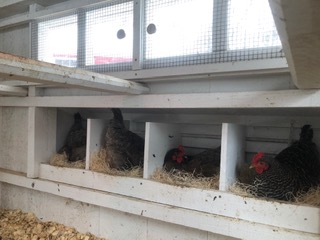
WHAT’S NEXT?
I’ll be sharing many tips on what to expect when bringing your new babies home in this 5 chapter e-book series in the coming weeks! Please visit me here at SMH each week for all the must-know tips! You can find the links to the other chapters at the bottom of this blog page and also on the FARMHOUSE BLOG page of this website.
See below for photos of my sweet Daisy in the “hospital” brooder box when she survived an attack by a hawk a few weeks ago.
Have a wonderful week!
Truly,

“The future belongs to those who believe in the beauty of their dreams.” – Eleanor Roosevelt
Visit the VIDEO GALLERY page of this website to see How to Build a Chick Brooder Box. Martin takes you into the workshop to show you how to build it out of 1 sheet of plywood. It’s a really nice, sturdy one that stores flat. It can be used for many years to come for raising chicks and even as an isolation box for a hurt or sick chicken in the future.
Come back and visit again real soon right here on the FARMHOUSE BLOG and check out the VIDEO GALLERY page to see what we area up to on our SMH YouTube Channel!
FIND THE LINKS BELOW TO ALL FIVE CHAPTERS OF MY FREE E-BOOK: “THE SMH ULTIMATE GUIDE TO BABY CHICKS”.

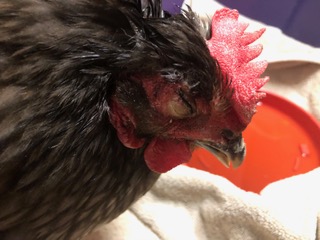
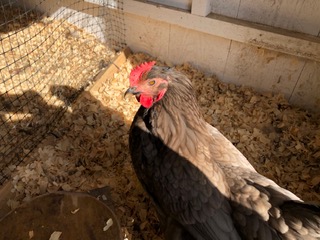
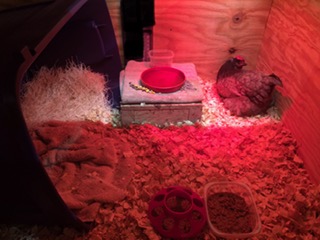
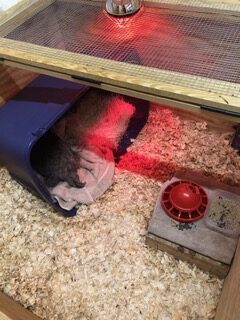
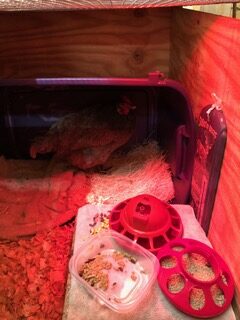
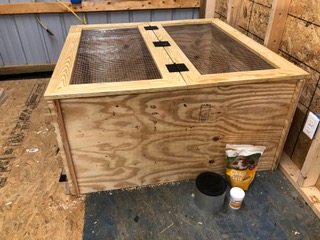
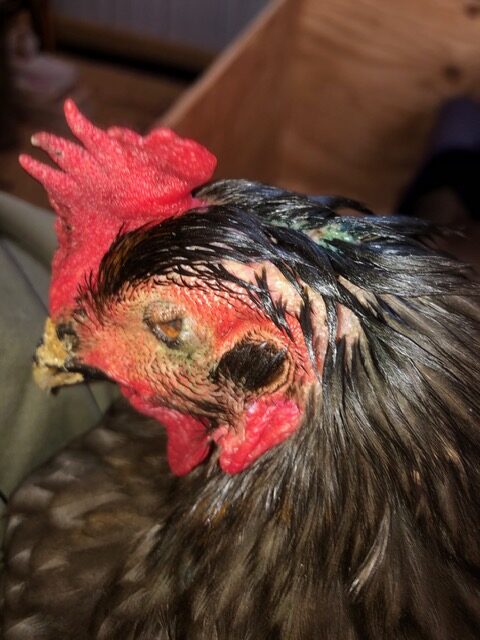
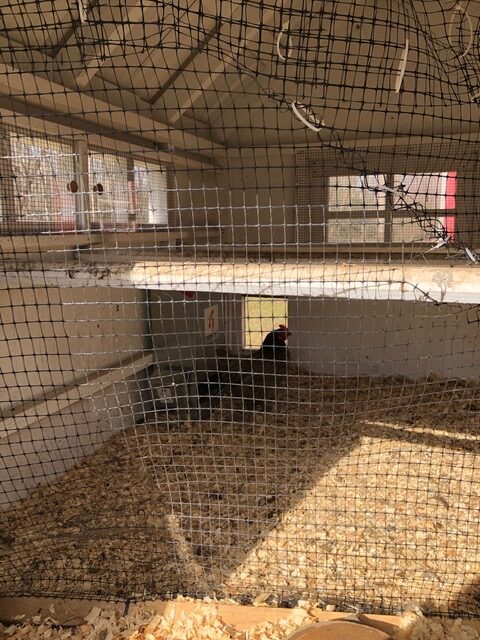
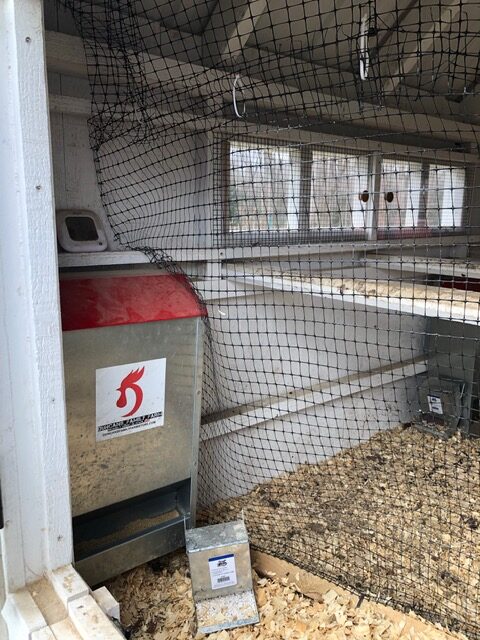
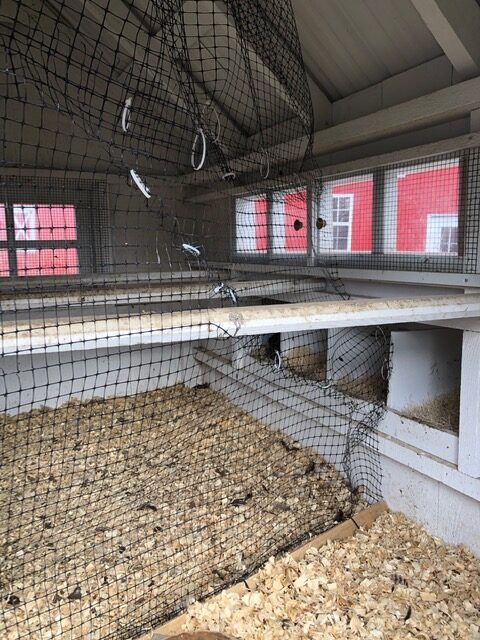
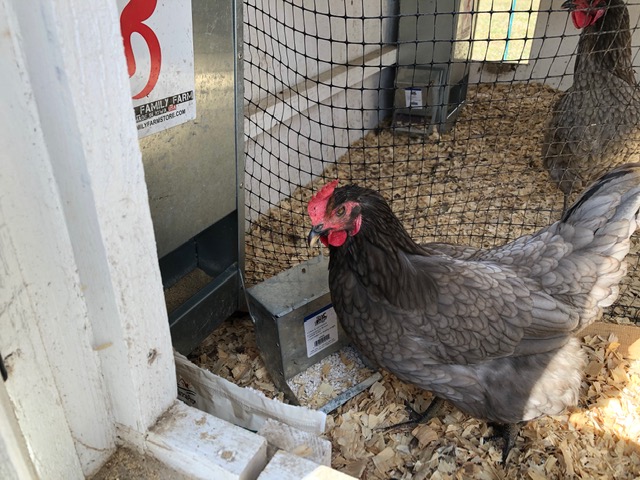
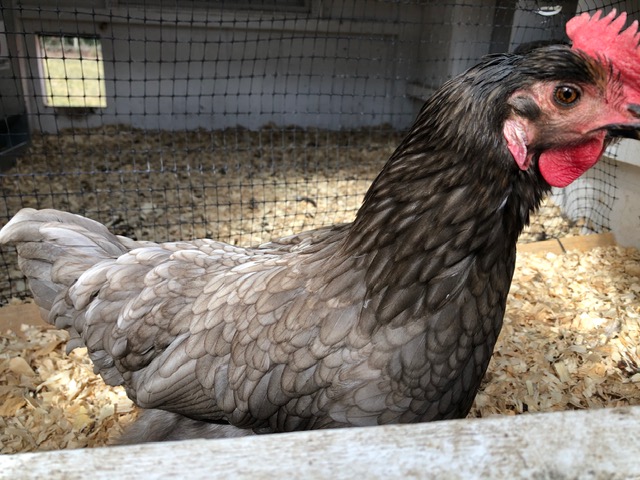
Leave a Reply